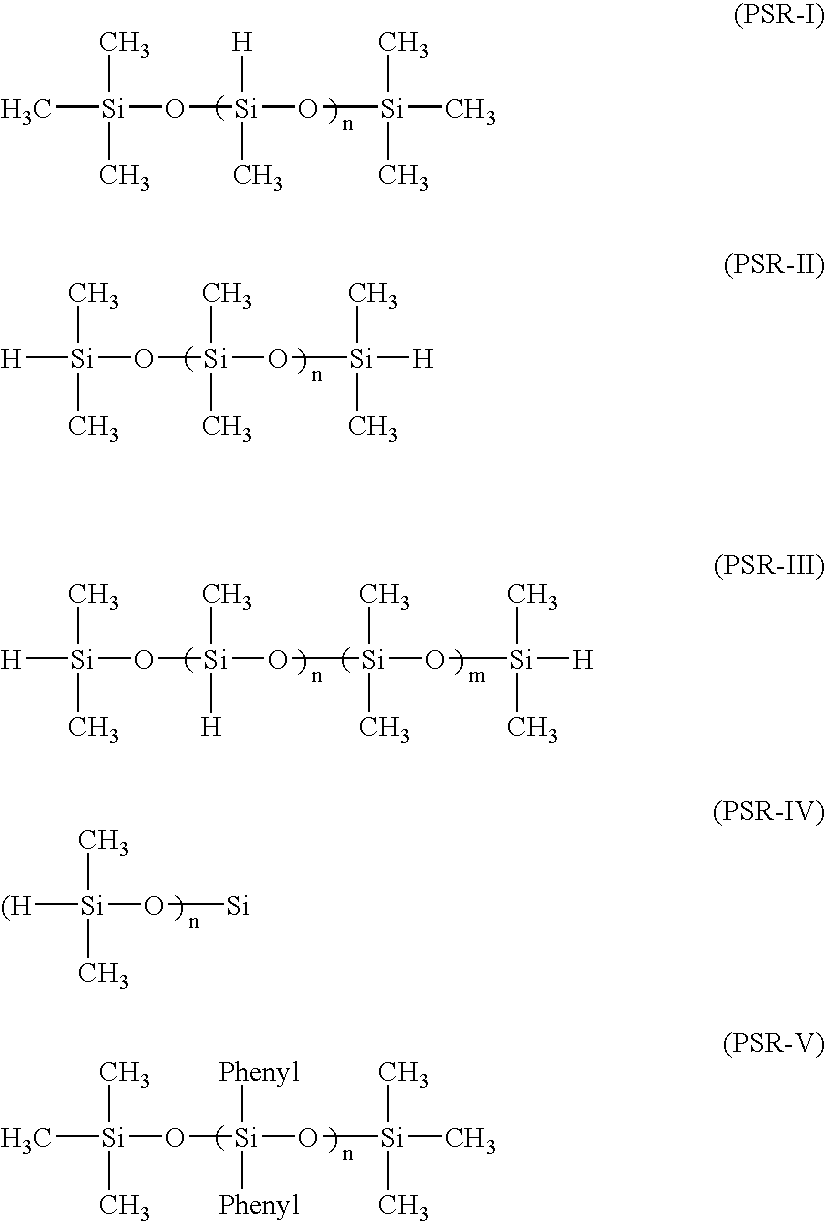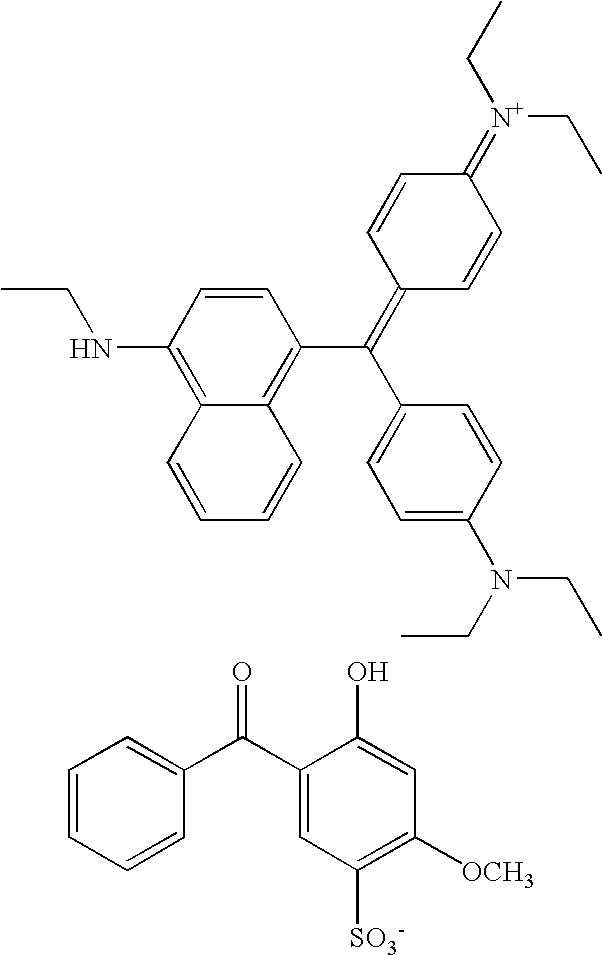Imageable elements and methods useful for providing waterless printing plates
- Summary
- Abstract
- Description
- Claims
- Application Information
AI Technical Summary
Benefits of technology
Problems solved by technology
Method used
Image
Examples
invention example 1
[0164]A two-layer lithographic printing plate precursor was prepared by applying the non-silicone non-crosslinked layer formulation Y to Substrate A and dried for 45 seconds at 135° C. to provide a dry coating weight of approximately 1.40 g / m2.
[0165]The silicone rubber layer formulation Z was then applied to this dried layer to provide a dry silicone rubber thickness of about 1.9 μm after curing at 140° C. for about 4 minutes.
[0166]Samples of the resulting non-ablative imageable element were imaged using a Kodak® Trendsetter SPECTRUM 800 at various imaging energies from 110 mJ / cm2 to 250 mJ / cm2 at 20 mJ / cm2 increments. The imaging file included 0-100% tints and 1 to 4 pixels wide lines. The imaged elements were then developed by wiping them with water to remove the silicone rubber layer and the upper portion of the non-silicone layer in the non-exposed regions, and the resulting printing plates were then inked and used for printing. From the printed impressions, it was apparent that...
invention examples 2 and 3
[0168]The imageable element described in Invention Example 1 was imaged as described therein at 130 mJ / cm2 but processed using either an aqueous solution of Tween® 80 nonionic surfactant (1 weight %) for Example 2, or an aqueous solution of Zonyl® FTS nonionic surfactant (1 weight %) for Example 3. In both instances, a suitable image was obtained that was then used for acceptable waterless printing (1-100% tints 200 lpi). The print run was stopped after 70,000 impressions.
invention example 4
[0169]An imageable element like that described in Invention Example 1, but without the crosslinked silicone rubber layer, was cut into 5 pieces (each 10×10 cm) and weighed. The non-silicone, non-crosslinked layer was then removed from each by immersing and rubbing them with Developer 956 (Eastman Kodak Company). Then, the remaining aluminum substrate from each piece was weighed to calculate the amount of non-silicone, non-crosslinked layer that had been removed in the developer.
[0170]The same process was carried out on two sets of five samples of the same element that had been imaged and processed according to the present invention. Element A and Element B in the following Table represent the two sets. The non-silicone, non-crosslinked layer was removed in the developer and the remaining aluminum substrate was weighed. We then compared of the removed non-silicone, non-crosslinked layer from the non-imaged element to that removed from the imaged element. We found that the difference ...
PUM
| Property | Measurement | Unit |
|---|---|---|
| Fraction | aaaaa | aaaaa |
| Fraction | aaaaa | aaaaa |
| Percent by mass | aaaaa | aaaaa |
Abstract
Description
Claims
Application Information
 Login to View More
Login to View More - R&D
- Intellectual Property
- Life Sciences
- Materials
- Tech Scout
- Unparalleled Data Quality
- Higher Quality Content
- 60% Fewer Hallucinations
Browse by: Latest US Patents, China's latest patents, Technical Efficacy Thesaurus, Application Domain, Technology Topic, Popular Technical Reports.
© 2025 PatSnap. All rights reserved.Legal|Privacy policy|Modern Slavery Act Transparency Statement|Sitemap|About US| Contact US: help@patsnap.com



